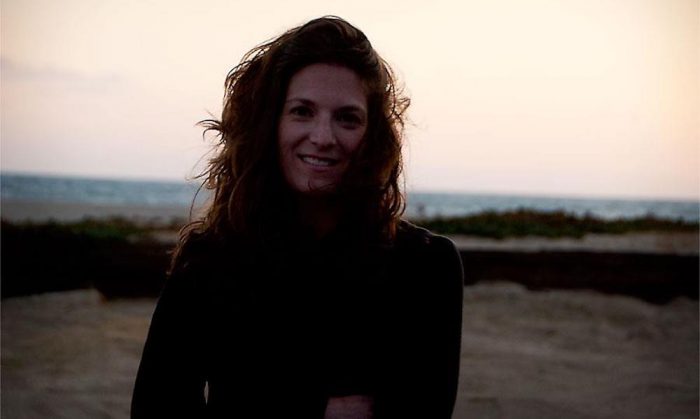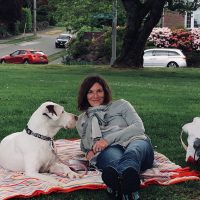How Buddhism’s “Three Poisons of the Mind” helped me find my voice.
You do not need to be a writer to be edited.
Of course, I did not realize this until one of my writing pieces was edited. It’s important to note that this article was not originally accepted. And one year ago, I would have pulled back in defensiveness, turned away in avoidance, and remained stuck with petulance.
Then, I began to realize that to be edited in life by an editor, therapist, child, friend, lover, or by myself, is one of the greatest gifts to finding our true voice.
Using Buddhism’s Three Poisons, we can challenge the ways of thinking and perception that can lift our suffering, making way for our true voice to be spoken in all areas of our lives.
Step One: The Resistance
Finding our voice. What exactly does that mean? Like me, you may think that any thought that naturally occurs is, in fact, our voice. And we may find ourselves responding to edits or rejections with defensiveness or incredulousness. “What do they know?!” we declare, closing out the editor’s email, shutting down our screens (and minds), and walking away, with little awareness that this juncture in front of us—receiving edits—is an important one.
How often do we pause and take in what someone is saying about us, to us? How often do we stop planning our response and remain open to the words or ideas conveyed? If you’re like most people, not often. We block the person’s words from permeating into any open mental space and firmly root our feet in the ground to defend the wall with which we protect our fragile sense of self.
This is not to condone people who verbally abuse us or use hostility toward us. No, these are about the many little moments when we are challenged and prodded to see things, see things or ourselves from a different perspective or in new ways.
When I received my first writing edits, I felt the resistance building up inside of me. It was hard and impenetrable. A monolith, erected from the ground and rising above me, blocking the editor and their edits. Shut down. Stuck. My heart was pounding. I felt threatened. My breath was rapid, and my chest was tightening. Closing my laptop, I retreated into a false sense of security in my familiar that sounded an awful lot like the door slamming shut on opportunity and growth.
What does resistance feel like in you? When do you get resistant? With whom are you most resistant?
In her mindful living book, How to Train a Wild Elephant, Jan Chosen Bays challenges us with the simple task to “say yes” to things or people with whom we would normally disagree, in non-critical situations. Saying yes helps us to work with aversion, one of Buddhism’s notions of the poisons of the mind. Letting go of the resistance helps us to see beyond ourselves and our sense of self-importance, leaving us feeling more invigorated and energized in our lives. I opened up to the editor’s edits and I was able to move from a place that was into a place that is. This moment. These edits.
We “chip away at the self, bit by bit,” as Robin Wright says, because we are ready to let go of the feelings and thoughts that we had previously considered part of our self-image.
Step Two: The Unclinging
So, why do we cling? Why do we resist?
We see ourselves as labels and fixed identities reflected in our writing. Even labeling ourselves “writers” can be limiting in some way, in terms of how we think writers or writing should be.
And yet, as writers, we do not write alone. We dance with our editors, the way clients dance with their therapists, and lovers dance in orbit. We grow when we make room for others’ experience of us, and our words, thoughts, and feelings. Like a tour guide on an archeological
dig, the editor’s light guided me as I broke ground and dug beneath the hard surface of academia and intellectualized writing, digging deeper into the reveal, fully exposed. What remained was the raw and naked darkness difficult to navigate in, as I carefully felt my way through the remnants of broken shards of my private shame.
Writing is similar to psychotherapy, meditation, or a choreographed dance: it evolves like an arc—never ending up where we start when first we sit down to feel, to step, to be, to write. But this transformative expansiveness can only occur once we loosen the grip, release the clinging. We “continue to turn over and over the organic details of our life until some of them fall through the garbage of discursive thoughts to the solid ground of black soil,” as expressed by Natalie Goldberg. Our writing, like therapy and relationships, is a collective space of shared experiences with others.
How do we know when we have released the grip? Bays speaks to another mindful exercise called “defining and defending,” where we check in with ourselves several times a day and ask, “How am I defining myself or my personal territory at this moment?” We find that we are in a continual headspace of declaring what is “me” or “mine.” For example, thinking “That is my article that I wrote,” which is true in a sense, but creates a certain amount of rigidity and confinement. Greed, the Buddhist notion of the second poison of the mind, is usually manifested in anger because we negatively react when things are not going, or people are not acting, the way we want, creating an unnecessary barrier to our happiness.
Opening up to the edited life is cathartic. Like therapy and relationships, in writing, we need to know all the ins and outs of ourselves before we are ready to let go of ourselves, to no longer be imprisoned by labels, beliefs, and habitual thoughts and behavior patterns. I call it our mental landscape. And many of us have quit therapy, relationships, meditation, and writing several times before settling into the process and letting it unfold, letting go of whomever we thought we were, who we should be, who the people in our lives should be, and who we think we are all going to become. We even grip tight to some supposed direction we think our writing should go.
In therapy, in relationships, in meditation, and in writing, we show up, sit down, and feel.
“The writing life requires courage, patience, persistence, empathy, openness, and the ability to deal with rejection. It requires the willingness to be alone with oneself. To be gentle with oneself. To look at the world without blinders on.” ~ Dani Shapiro
Step Three: Letting Go
Letting go requires wisdom and clarity, the opposite of the third poison: ignorance. We are ignorant if we believe we are a fixed entity. All things attached to “me” are in a constant state of transition and change—my likes, my dislikes, my opinions, my body, my relationships, my energy level, my mood, and my thoughts, just for starters.
If I submit an article and believe that this is “me” and it “should be” published, then being edited or rejected will shatter my sense of self, life, and the illusory sense of control, which leads to stifling suffering. If I believe I am to always be a writer, to be strong, or to be healthy, because right now I am, then I am not taking into consideration the millions of moments going forward into the future that ultimately impact and likely change all of these current states of being.
This constant state of change is impermanence. It is being present in the space between hoping my article gets published and realizing it did or did not. It is letting go of expectations and facing what is real, in this moment. We do not judge these changes as bad or negative, we do not suffer in wishing it were something else.
~
There are several moments in my day when I am feeling overwhelmed and am trying to control all the little things in my life. It feels as if I have landed on a hard, concrete surface, unable to move. Stuck. Frustrated. In these moments, I visualize pulling a lever that opens that concrete trapdoor beneath me. Instantly, I am floating, unencumbered, no longer stuck. I released the grip. I let go. I am free. All of us hold our own levers that we can pull to release whatever imprisons us.
How do you visualize letting go?
All things change moment to moment, and we have the fortitude, in the words of my yoga teacher, to be with what is.


 Share on bsky
Share on bsky





Read 10 comments and reply